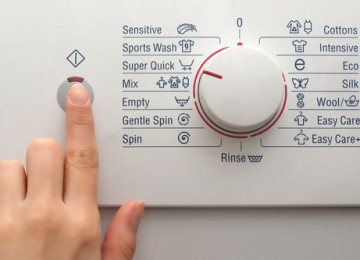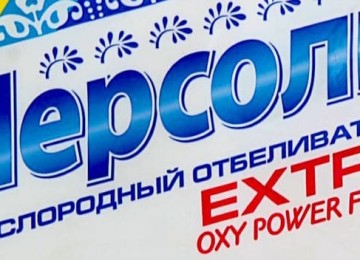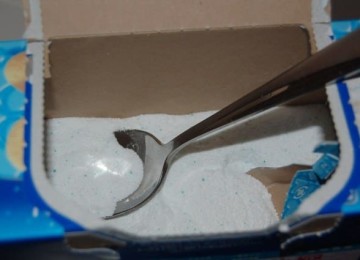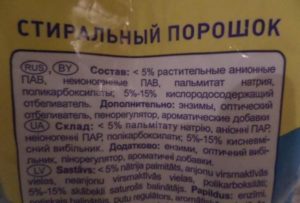 The market of detergents is represented by compositions in the form of powders, capsules and gels, and only a few showcases are occupied by ECO-chemistry. Such washing compositions are not particularly popular, and most consumers, entering the store, do not pay attention to them, giving preference to more familiar samples. Is it worth the risk of watching advertisements and exposing yourself to harmful chemicals? Knowing the composition of washing powder, you can maximally protect your things during washing.
The market of detergents is represented by compositions in the form of powders, capsules and gels, and only a few showcases are occupied by ECO-chemistry. Such washing compositions are not particularly popular, and most consumers, entering the store, do not pay attention to them, giving preference to more familiar samples. Is it worth the risk of watching advertisements and exposing yourself to harmful chemicals? Knowing the composition of washing powder, you can maximally protect your things during washing.
Types
Washing agents and other compositions have a complex set of components. The chemical composition of washing powder depends entirely on the intended purpose and specific use.
Powders are:
- universal;
- for hand washing and in washing machines;
- for heavy soiling;
- for delicate washing ;
- for washing and disinfection;
- for removing stains;
- for multi-colored items;
- children's washing powders;
- powder for whites;
- for washing with cold or hard water, etc.
What is included in the composition of washing powder
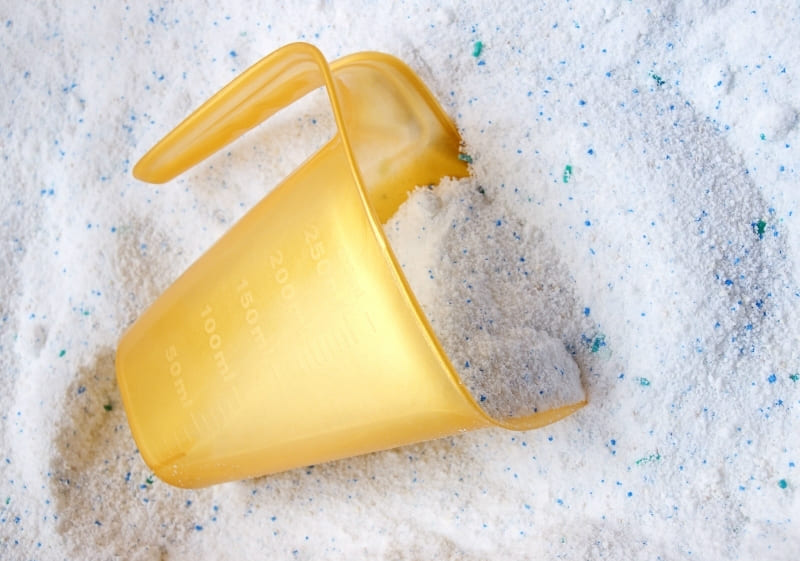
The product may contain:
- surface-active components. They can be ionogenic and non-ionogenic, differ in their effect on various contaminants.Often, manufacturers of laundry detergents strive to achieve maximum process results by combining various surfactants. Surfactants can reduce electrostaticity and soften water hardness. Such a product may contain about 35% of them;
- electrolytes and complexing agents – enhance the effect of surfactants. In most cases they are represented by sodium bicarbonate and sulfate. Many powders contain phosphates, which soften water. Their share accounts for up to 40%;
- antiresorbents – included in the detergent to prevent dirt from sticking to the clothes again during washing. In most cases it is sodium silicate. Component in powder – up to 2%;
- enzymes – organic components that accelerate the removal of fat and protein stains. Represented by amylases, proteases, lipolases. Content – 2%;
- optical brightener – removes yellowness from fabric, is an organic product. It is considered a deep-penetrating luminescent dye that absorbs short ultraviolet waves and reflects a bluish tint visible to the eye. In fact, it is a coloring pigment; it does not take part in washing and does not remove dirt. Coumarins, stilbenes or benzimidazoles are used as such additives. Volume of the total quantity – 1%;
- activators and peroxide bleaches – available in many means. For washing in hot liquids, it is recommended to use powders containing perborate and sodium percarbonate. These components oxidize under the influence of an alkaline environment, destroying dirt. Bleach accounts for 30% of the total in some products. Activators enhance their effect if items are washed at lower water temperatures.The most common of these components is tetraacetylethylenediamine. With its help, reactions are created, and the bleach acts already at 20 degrees Celsius;
- sulfates – salt of sulfuric acid. Sodium sulfate is used. This type of additive is considered neutral and is intended to reduce the cost of the product. Sulfate has washing properties, but mainly its presence activates the surfactant;
- phtholates and flavors – almost every product has such components of natural or artificial origin. To ensure that fragrance odors last longer, phtholates – esters of phthalic acid – are added to the laundry detergent;
- other components – chlorine, various solvents, hydrotropes, substances with anti-corrosion properties, coloring pigments, preservatives, foam-reducing agents, antioxidants, etc. can be added to the washing composition.
Many substances contained in detergents can harm the human body, some have a neutral effect, and there are others whose effects have not yet been fully studied.
Composition of popular laundry detergents
Let's figure out what washing powders are made from. For convenience, all data on the analysis of the composition are presented in the table:
| powder composition | Persil | Ariel | Myth | Tide
children's |
Eared nanny |
| anionic surfactants | + | + | + | + | |
| bleach | + | + | + | + | |
| Nonionic surfactants | + | + | + | + | + |
| polycarboxylates | + | + | + | + | |
| phosphonates | + | + | + | + | |
| soap | + | ||||
| optical brightener | + | + | + | + | + |
| enzymes | + | + | + | + | + |
| fragrance | + | + | |||
| zeolites | + | + | |||
| flavorings | + | + | + | ||
| hexylcinnamic aldehyde | + | ||||
| linalool | + | ||||
| sulfates | + | ||||
| silicates | + | ||||
| defoamer | + | ||||
| antiresorbents | + |
What is the manufacturer silent about?
Sometimes a laundry detergent contains components that you won’t find information about on the packaging:
- TAED – whiteness activating agents. The problem is that oxygenated bleach can only function in hot water. To make it work at other temperature conditions, TAED is added. If the packaging says that the powder whitens at any temperature, then such a product is necessarily present in it, but you will not find a note about this;
- Phtholate – does not allow the smell to erode, fixes it on the fabric. It’s easy to find out about its presence - if the manufacturer guarantees that things will smell fresh for a long time, it means there is phtholate in the powder. It also fulfills a second purpose - it does not allow powder granules to roll off and minimizes the amount of dust;
- Antiresorbents – prevents dirt from sticking to the fabric when washing.
If you are in doubt about the powder, we recommend activating the re-rinse of items at a liquid temperature of sixty degrees. Phosphates and surfactants will be completely removed from the fabric.
Recommended washing powders
For most consumers, the information provided here will play a decisive role in the purchase of laundry detergents. If you don’t want to harm your body, you need to know which laundry detergent is the least dangerous. Everyone wants their skin to breathe freely, because the body is already polluted by the air of big cities. So you should use natural ingredients, even more so.That there are a sufficient number of them on the modern powder market. The cost of funds varies, so everyone can find an option that suits them.
Choosing a good remedy
When buying powder, use the following tips:
- Be sure to check the composition of the detergent. If it is written in small, smeared font and in a foreign language, refuse this option;
- the packaging of the washing powder must be completely sealed;
- Feel and even shake the pack to make sure there is loose laundry detergent inside. The presence of lumps indicates that the storage of the powder was organized improperly;
- There should be no strong odors. If they are felt, the composition contains a large amount of chlorine components that are harmful to the body.
Recommended hypoallergenic laundry detergents
After much research, experts and consumers themselves made clear conclusions about the best washing powders:
- Frosch – environmentally friendly washing powder, creating a whitening effect. The main advantage of this brand is its focus on environmental cleanliness, because the manufacturer itself is interested in producing non-hazardous chemical compounds that can easily remove the most difficult contaminants. You can wash children's clothes with any type of detergent from this brand. The composition is highly concentrated and will last for a long time. The cost of such washing compositions is quite reasonable;
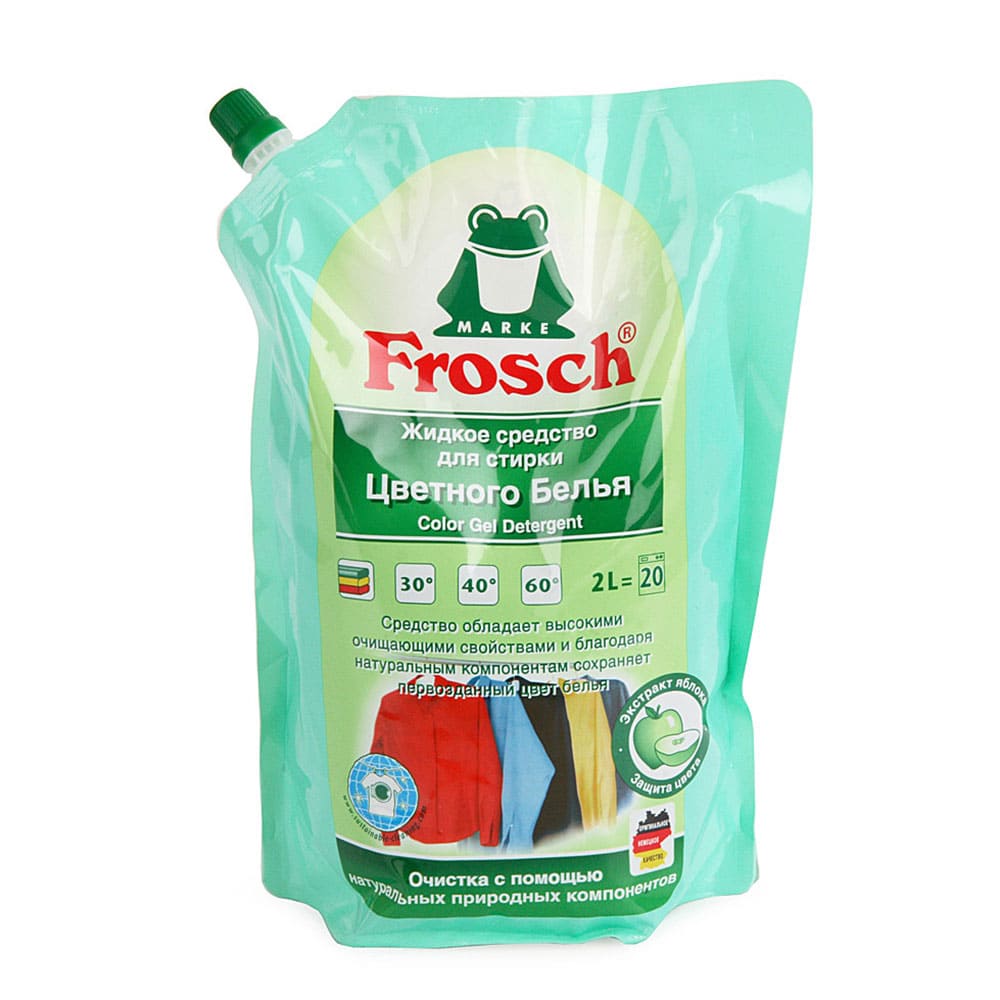
- Baby Bon Automat – a safe detergent for children’s clothes that meets all environmental requirements. Works great on dirty stains and is economical to use;
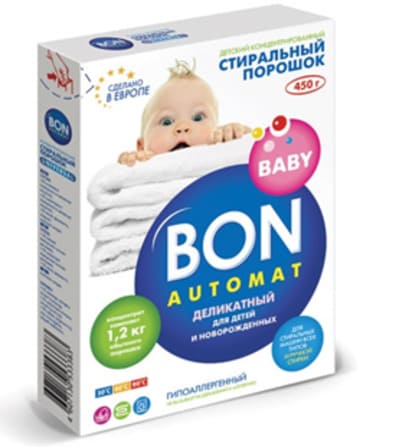
- Erau Helga Super – an inexpensive detergent that is an ideal alternative to popular formulations with high prices. Sold in small packages, but it lasts for a long time. The powder does not contain phosphates harmful to the body, the product works perfectly at any water temperature, dissolving perfectly. There is a drawback - it should not be used for wool and silk products;
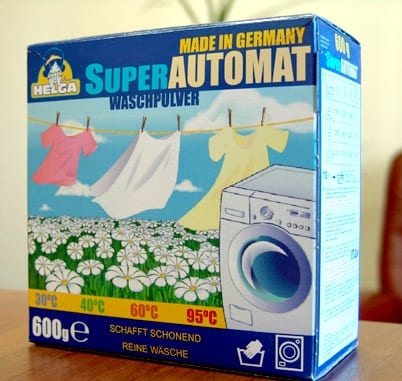
- Burti Baby – a safe and environmentally friendly detergent used for any washing method. The composition is concentrated and intended for long-term use. No phosphates;
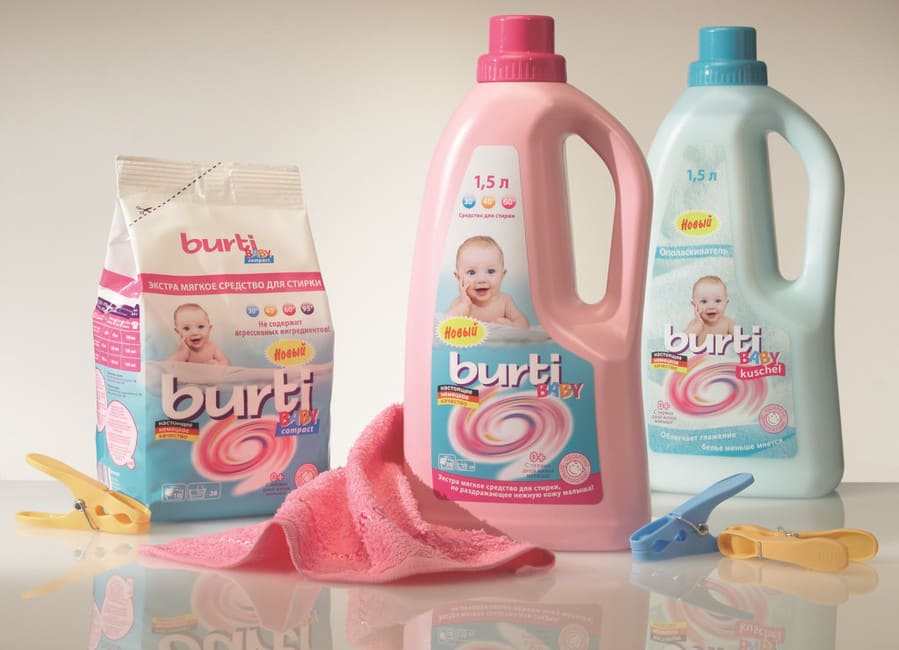
- Amway SA8 Premium – a popular laundry detergent that removes even old dirty stains. Contains silicic acid, which prevents rust on metal.
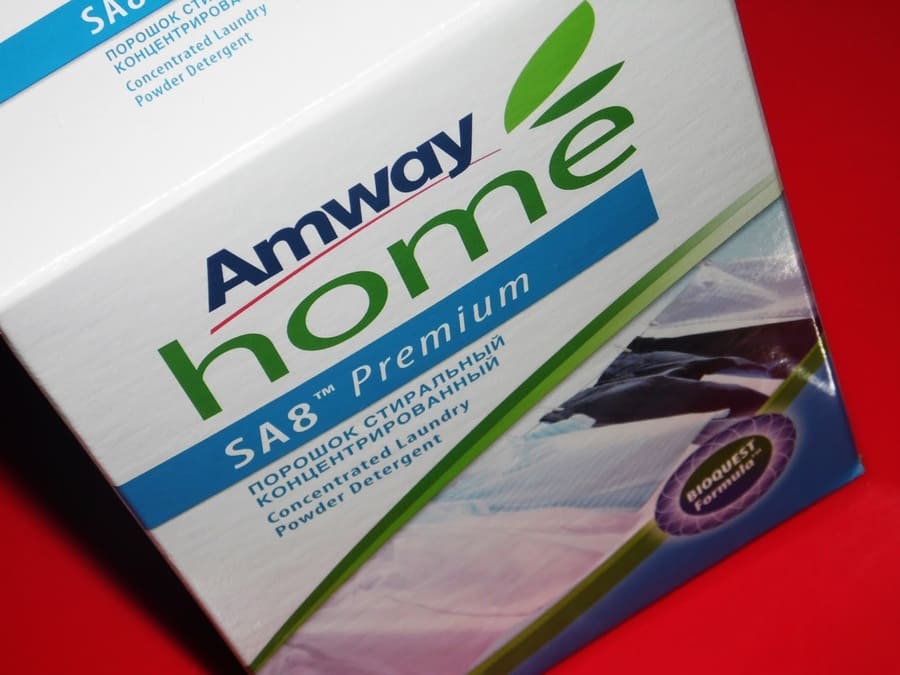
Sometimes, in our pursuit of popular washing brands, we completely forget about excellent products that remove dirt and do not harm the body. These include Lotus, Amway, Aistenok, Dosya, Umka, Chistown, Biolan, Sarma, Faberlic, etc. In addition, among liquid washing powders There are also some good remedies.







